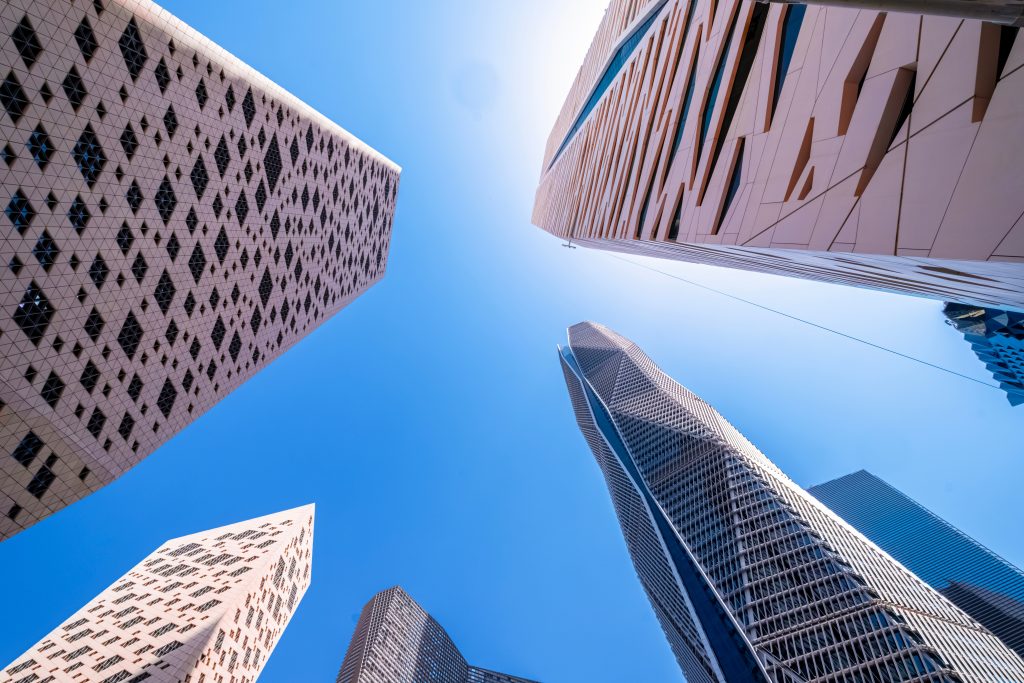The non-oil sector in Saudi Arabia is showing signs of robust growth, marking a significant milestone in the Kingdom’s strategic push towards economic diversification. Recent data reveals a positive trajectory, indicating a shift away from the traditional dependency on oil revenue.
Strong demand has been a driving force behind the surge in Saudi Arabia’s non-oil business activity for March, reaching a peak not seen in the last six months. Findings from a recent survey show the seasonally-adjusted Riyad Bank Saudi Arabia Purchasing Managers’ Index (PMI) standing at 57.0 in March, slightly reduced from February’s 57.2, yet remaining well above the threshold of 50.0 that denotes expansion.
March saw the output sub-index climb to 62.2 from 61.5 in February, its highest since the previous September, spurred by a rise in new orders, particularly within the manufacturing sector, suggesting an upturn in production.
“The non-oil economy of Saudi Arabia is exhibiting notable expansion, with business activity reaching a significant high over the past six months,” said Naif Al-Ghaith, the chief economist at Riyad Bank. “This growth has led to increased purchasing and hiring, reflecting a positive market outlook.”
Experts highlight the crucial role of the non-oil private sector in fostering sustainable job opportunities and driving productivity growth, especially when contrasted with the more capital-intensive oil sector, which faces limitations in satisfying the needs of the Kingdom’s growing young and educated populace.
“Considering nearly 60 percent of Saudis are under 30, it’s vital to pivot towards non-oil private enterprises to sustainably create jobs and enhance productivity,” stated Nasser Saidi, founder, president and chief economist at Nasser Saidi & Associates.
“The resilience of the private sector is mirrored in the expansionary readings of Saudi’s PMI for March 2024. The rise in demand has led to a surge in new orders and clients, with export orders recovering notably. This resurgence is accompanied by increased employment and mild wage pressures, improving the financial health of firms and thus strengthening the financial market,” he added while speaking to Al Arabiya English.
As part of its Vision 2030, Saudi Arabia, the world’s premier oil exporter, is channeling investments into diverse sectors like tourism, construction, and manufacturing. This strategic framework, launched in April 2016, aims to reduce the Kingdom’s oil dependence.
Business optimism is particularly high in sectors like construction, wholesale, and retail. Policy reforms and initiatives are in place to lessen hydrocarbon dependency, invigorate domestic industries, and foster the development of technology, real estate, tourism, and infrastructure.
“Saudi Arabia is on a steadfast path to accomplishing the ambitious goals of Vision 2030, propelled by public investments and a sweeping array of policy and legal reforms,” Saidi elucidated. “The Kingdom is diversifying through enhanced trade diversity, government revenue diversification, and the broadening of production capabilities beyond oil-dependent industries.”
While Saudi Arabia’s GDP saw a slight contraction of 0.8 percent in 2023 due to a dip in oil activity, the non-oil sector expanded by 4.4 percent, as per official data. The non-oil economy, making up 50 percent of the nation’s GDP and valued at $453 billion, was bolstered by steady growth in investment, consumption, and exports.
“Private consumption, accounting for 40 percent of this growth and spurred by emerging sectors like entertainment and tourism, has been a significant driver,” Saidi remarked. “Social reforms have also led to increased female participation in the labor force and a reduction in unemployment among women to a historic 13.7 percent in the fourth quarter of 2023, resulting in higher household incomes and consumption rates.”
Tourism is seen as a sector with immense potential given Saudi Arabia’s capacity to attract various types of tourists. In 2023, the country achieved a milestone by hosting 27 million international and 77 million domestic tourists, meeting targets formerly set for 2030. The revised aim is to attract 150 million visitors by 2030, focusing on hospitality and real estate development.
Strategic initiatives, including the development of Red Sea resorts and hosting significant events, along with measures such as the introduction of a unified GCC tourist visa, are expected to boost tourism prospects.
Business sentiment among non-oil companies remains high, with expectations for continued demand and growth. The services industry, which includes sectors such as finance, wholesale and retail, hospitality, as well as transport and logistics, is anticipated to lead this upswing, reflecting a positive economic forecast. However, challenges in the construction sector may arise due to disruptions in Red Sea shipping, potentially increasing the costs of construction materials.
The near-term outlook is favorable, bolstered by a variety of factors such as the pipeline of mega projects, preparations for Expo 2030 and the World Cup 2034, and the ongoing regional headquarters project. The Public Investment Fund’s investments in new sectors are also expected to support non-oil activity, contributing to economic growth.
Economic projections for Saudi Arabia suggest growth of 2.7 percent in 2024 and 5.5 percent in 2025, following a 1.1 percent contraction in 2023, according to the International Monetary Fund.
